A complete SF2 electronic closed circuit Rebreather.
1 CCR dive computer and / or bottom timer and depth gauge.
Mask, fins and a suitable line-cutting device.
Slate & pencil.
Reel with a minimum of forty 40 m / 130 ft. of line
Lift Bag / Delayed Surface Marker Buoy (DSMB) with a minimum of 25 lb / 12 kg lift
Exposure suit appropriate for the environment
Access to an oxygen analyzer.
Appropriate weight.
Bailout gas supply.
In addition the Instructor and any certified “assistant” will also carry a bailout gas supply for the student(s) during all open water sessions. This redundant gas source must be greater than the Instructor and any certified “assistants” rebreather requirement.
The manufacturer’s manual is mandatory for use during this course but instructors may use any additional text or materials that they feel help present these topics.
The following topics must be covered during the course:
History and evolution of Rebreather
Comparison of Open Circuit, Closed Circuit and Semi Closed Circuit Rebreather systems and the benefits/problems with each
Practical Mechanics of the System:
Assembly and disassembly of the ECCR
Layout and design of the unit
Absorbent canister design and maintenance
Breathing loop cleaning procedures
Manufacturer supported additional items (Automatic Diluent Valve, etc.)
Gas Physiology:
Oxygen toxicity
Nitrogen absorption
CO2 toxicity
Proper scrubber packing (in accordance with manufactures recommendation):
Gas consumption
Electronic or manual systems design and maintenance:
O2 metabolizing calculations
Fuel Cells
System electronics functionality and calibration procedures
Dive Tables:
Constant PPO2 theory
CNS and awareness of OTU tracking
Dive Computers
Mix adjustable:
Constant PO2
O2 integrated
Dive Planning:
Operational Planning
Gas requirements including bailout scenarios
Oxygen limitations
Nitrogen limitations
Emergency Procedures:
Bailout onboard or off board
Three H’s problems
Flooded Loop
Cell Warnings
Battery Warnings




